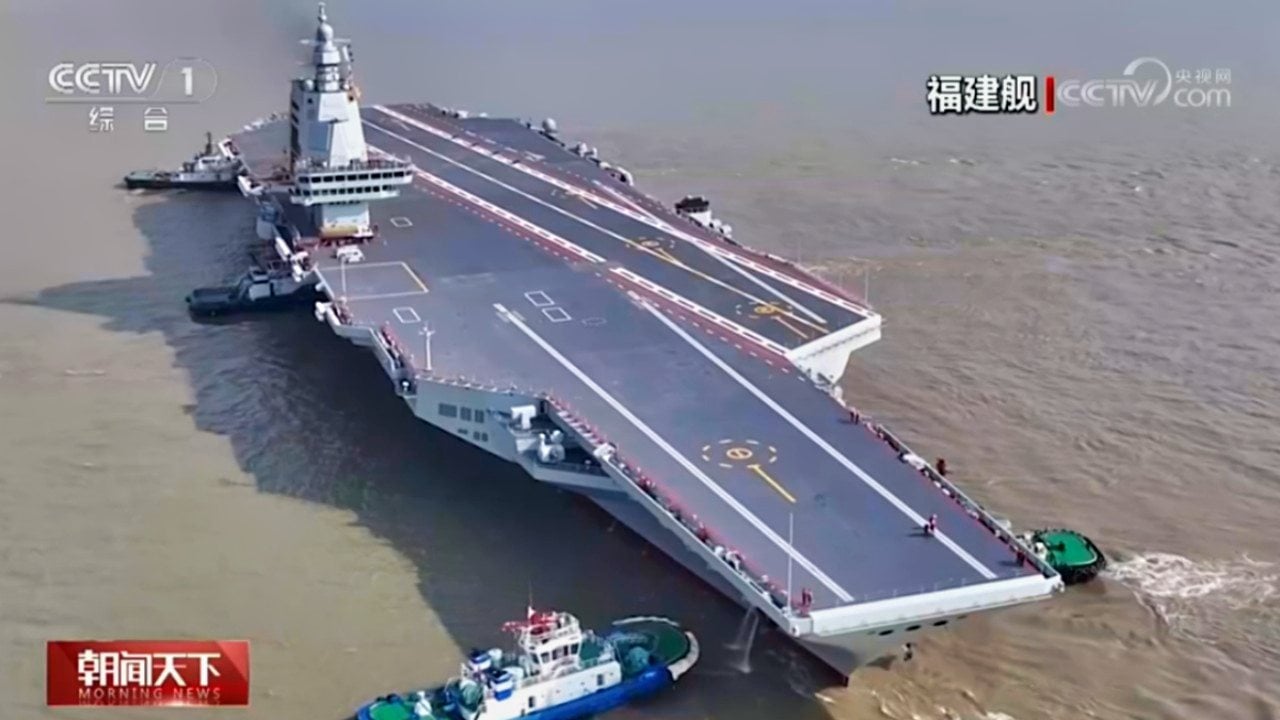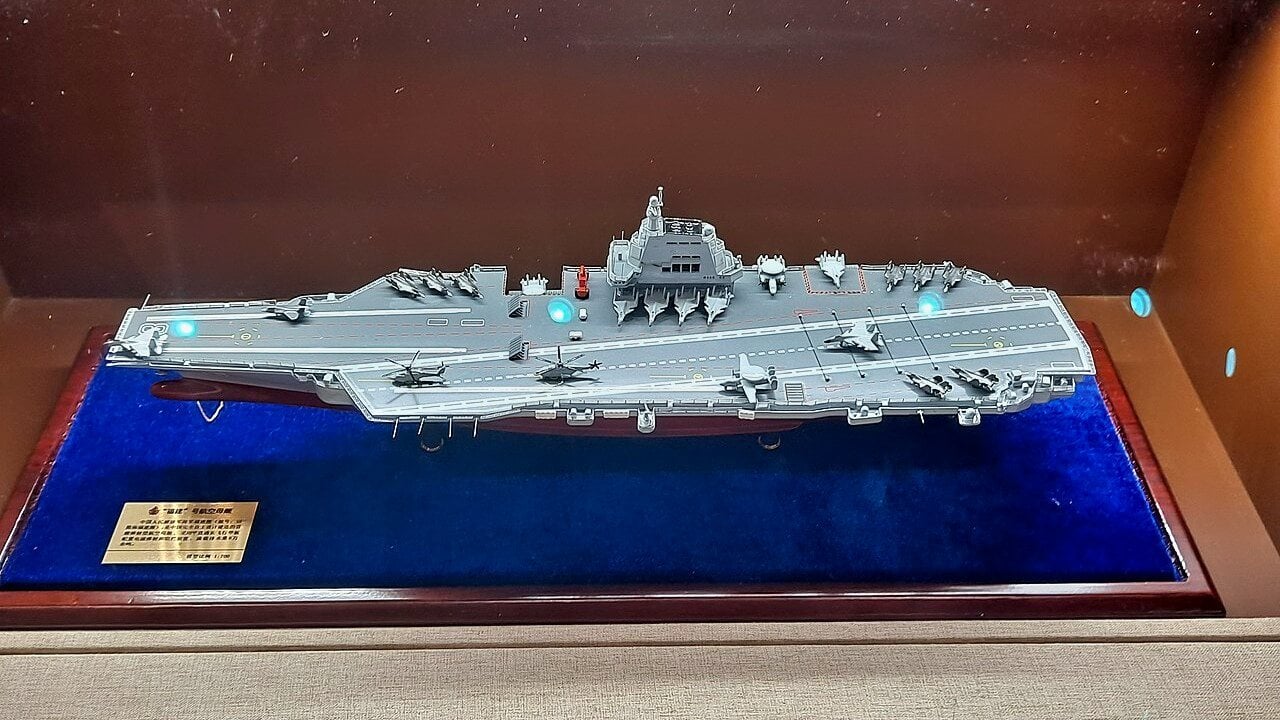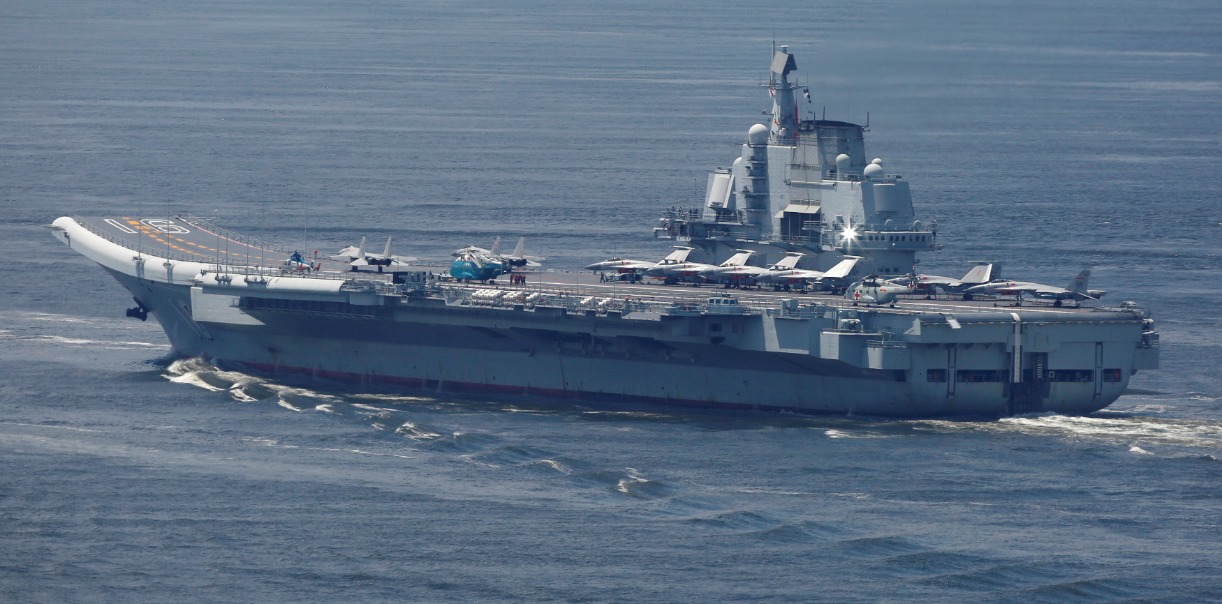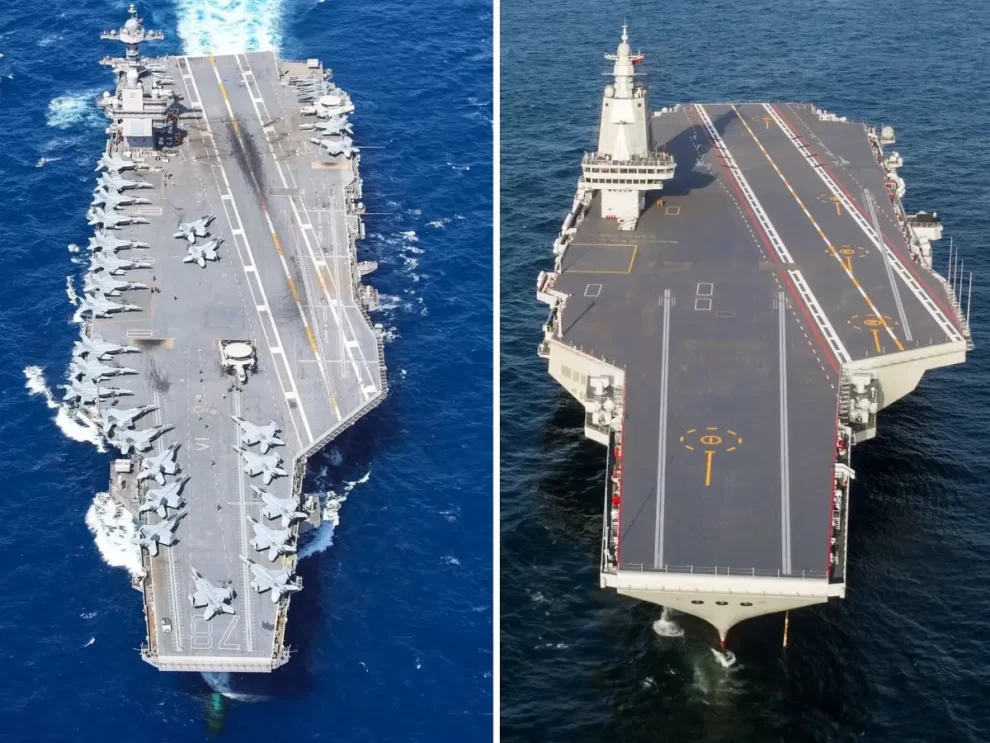What You Need to Know: China’s People’s Liberation Army Navy (PLAN) has been developing a powerful fleet of aircraft carriers, expanding to potentially six by the 2030s. But unlike the U.S., China’s carriers aren’t designed for distant power projection; instead, they serve within an anti-access/area-denial (A2/AD) “bubble” in the First Island Chain.

-This A2/AD shield, fortified with advanced missile systems, limits U.S. naval access while granting China freedom to operate within its perceived sphere of influence. China’s carriers thus support local dominance under this protective umbrella rather than anchoring the fleet’s offensive power.
-China’s strategy prioritizes defense and regional control over direct global reach.
Why China’s Growing Aircraft Carrier Fleet Isn’t What You Think
The People’s Liberation Army Navy (PLAN) has been building a fleet of increasingly sophisticated aircraft carriers. What began as the butt of all jokes in the naval community—China’s Russian-built aircraft carrier called the Liaoning—has helped the PLAN develop into a robust (though untested and still limited) carrier force.
Possessing three total aircraft carriers, with a fourth on the way, China is churning out their aircraft carriers like sausages (thanks to the mass production capabilities that Wall Street handed over to China during the deindustrialization craze that befell America in the middle of the last century). The fourth carrier in China’s growing fleet is rumored to be nuclear (the other three are non-nuclear).
China’s naval planners desire to have five or six aircraft carriers in their fleet by the 2030s, according to Wang Yunfei, a retired PLAN officer with knowledge about Beijing’s carrier plans.
This begs the question, though, how many carriers does China really need?
And that gets us to the underlying problem facing most great powers today, which is that the advent of sophisticated anti-area/access-denial (A2/AD) systems has complicated the ability of navies everywhere to project power beyond their shores.
At least that’s the case for the US Navy.

China Plans to Use Aircraft Carriers Within The Bubble
So, if A2/AD has seriously stunted the ability of surface fleets to move their assets within striking range of distant targets—and China’s military has led the way in this revolution—why is Beijing dumping so much money and resources into developing their own aircraft carrier capability?
It’s because, despite their awful human rights record and authoritarian regime, China is led by actual military strategists not politicians.
For China, they have a multi-step strategy for dominating the Indo-Pacific—starting with the First Island Chain. There are three island chains, each radiating out from the previous one. The First Island Chain runs from Japan through Taiwan all the way down to the Philippines. The Second Island Chain consists of the tiny South Pacific Islands that track from the Japanese island of Okinawa all the way out to U.S.-controlled Guam. The third and final chain comprises Alaska’s Aleutian Islands and jogs down to the Hawaiian Islands. \
For China to dominate the Indo-Pacific it must ultimately come to control all three chains. Their main priority now, however, is to dominate the First Island Chain. That’s where China’s sprawling A2/AD constellation throughout the South China Sea, for instance, comes into play. From these forward-deployed positions, China’s A2/AD systems can rebuff most attempts by US Navy surface warships to come within range of Chinese forces that may be engaged in an invasion—or even a blockade—of Taiwan or some other hostile action against another US ally, such as the Philippines.

Without the ability to reliably project power against Chinese forces in the First Island Chain, Beijing’s forces suddenly have a strategic freehand in what they view as their sphere of influence.
In essence, A2/AD systems create a nearly impenetrable “bubble” to shield Chinese military forces from American military retaliation. Underneath the protective A2/AD bubble is where Chinese carriers will operate—presumably out of range from American offensive systems. With the US Navy’s biggest power projectors, aircraft carriers, kept away, China’s carriers will have free reign to operate and intimidate.
This, of course, is the purpose behind China’s robust arsenal of A2/AD systems.
The Aircraft Carriers is Not the Centerpiece of China’s Power Projection
Unlike the US Navy, China’s aircraft carriers are not the center of gravity for their fleet. These systems are ancillary. The lynchpin of China’s offensive maritime strategy is oddly in their defensive A2/AD systems.
These systems are specifically tailored to keep the bulk of US naval power back, giving China’s other naval assets—like their less sophisticated aircraft carriers—the room to enhance their national interest in the First Island Chain and keep US power back over-the-horizon.










